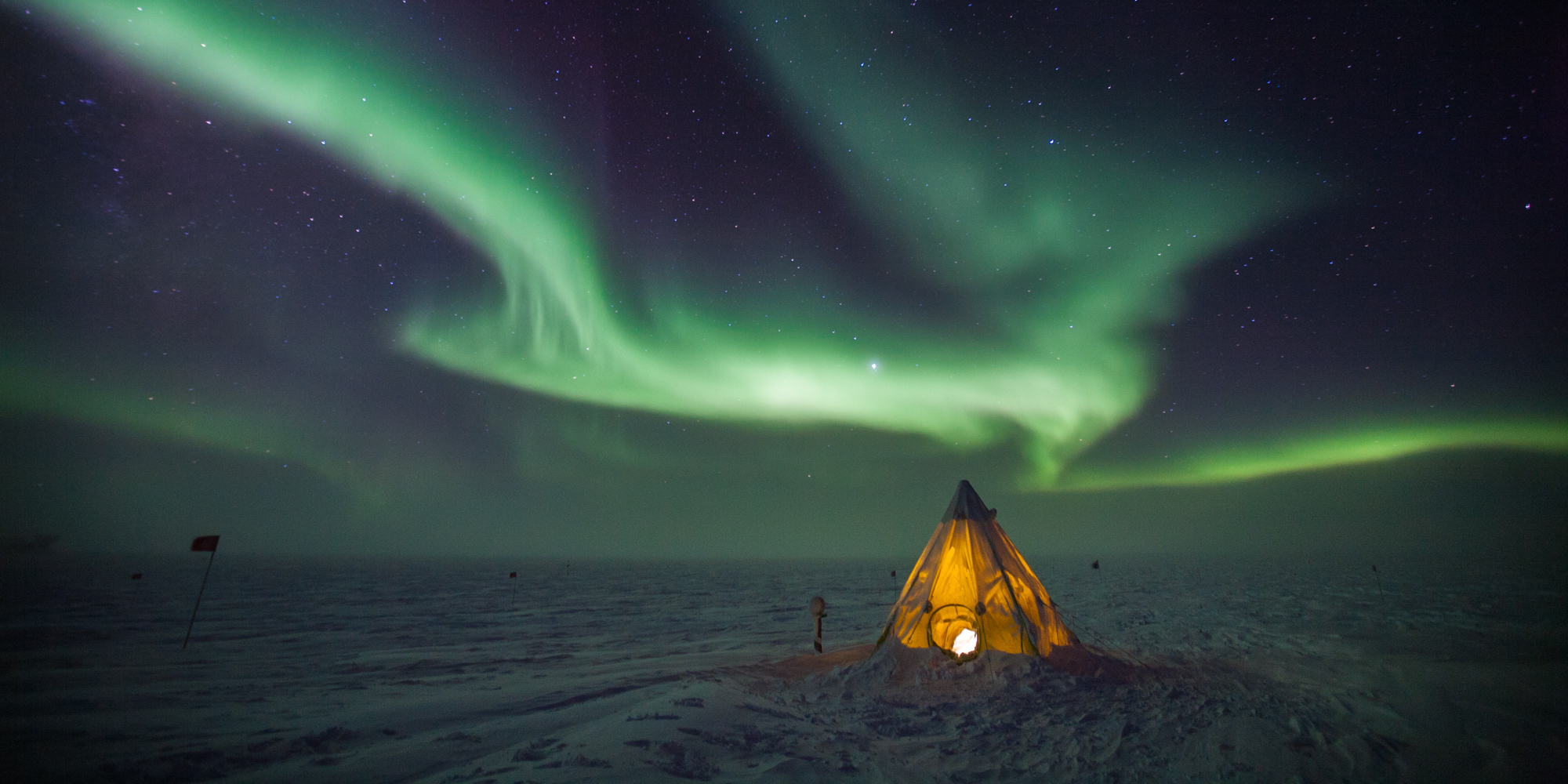By Patrick Culls, CIRES and NOAA scientist, from Boulder, September 15
From 2008-2009, I spent a year living at the bottom of the world. I worked for the National Oceanic and Atmospheric Administration (NOAA) at the Amundsen-Scott South Pole Station, which sits only a hundred yards from the geographic pole marker.
The short summer season was a rush of activity, with science teams coming and going and regular flights bringing mail and fresh food. But, once we said our goodbyes and that final airplane disappeared on the horizon, my crew of 43 people settled in for the next nine months. I look back fondly on my time there: I made a few lifelong friends, the majority of the crew got along quite well, I learned to appreciate excellent board games, I read lots of books, and I spent countless hours under a pristine and glorious sky.
Once the Sun set, time seemed to shift to another scale. Without sunlight to signal the passing of time, it was instead a two-week period dominated by dark skies, the bright swath of the Milky Way, and glorious aurora giving way to the shockingly bright two weeks centered on each full moon. For me, a full moon reflecting off of unending snow was as good as daylight. You didn’t need a headlamp and could see for miles.
But the periods in between the appearance of the moon was what I cherished most. The darker it was, the brighter the stars. I didn’t know it at first, but I was one of the lucky people because I actually worked outside of the main station. Every day I put on my cold weather gear and walked the flag line out to NOAA’s Atmospheric Research Observatory to take air samples and check on instruments. Halfway there tended to be the time when my eyes became adjusted to the dark and I would usually realize that what I thought was a cloud was really an aurora fluttering away above me. I don’t know how many times I stopped walking and simply lay down on my back and watched in amazement until just when I needed to hurry back inside before body parts began to freeze. One of the hardest parts of my stay was the month leading up to South Pole sunrise, when I slowly watched the stars fade away and wondered if I would ever again see a night sky that compared.
Here’s a video of the South Pole aurora that I took during my stay :


Never ceases to amaze me! Beautiful
Your description made me feel like I was there! Not very many humans get to actually see something like that–thanks for sharing your experience.
Awesome summary of your winter experience! The video was out of this world! I lived/worked at the South Pole station Oct-Dec 1976 to assist the New Zealand weather service with upper air balloons and surface obs. I worked for NOAA/NWS for 36.5 yrs. Currently I give free presentations to community groups (retired and have time!) on a variety of weather topics. Any chance you can share your video clip with me. Of course I will give credit. rustykapela@gmail.com
How did you shoot/process the video? Any filters or other image enhancements?
The photos were a series of 200 6-second exposures with an original Canon 5D and 24mm f/1.4 lens. Those were processed using Adobe Lightroom, turned in to a .MOV video with Quicktime and then had a “cc time blend fx” filter added in Adobe After Effects to smooth the transitions between frames. Pretty minimal processing. It was a fantastic aurora display and quite bright.
It is gorgeous! I am going to embed it in a backgrounder we published yesterday on Climate.gov about climate & the ozone hole. There is a section where i talk about how the chlorine reactive gases are only stable while it is dark… this will be a perfect way to show people the polar darkness!